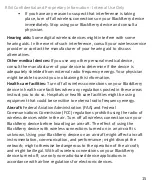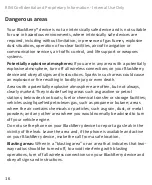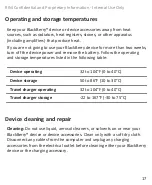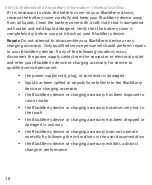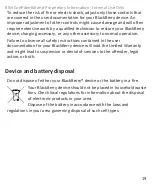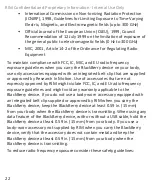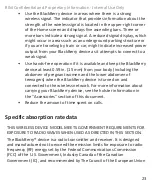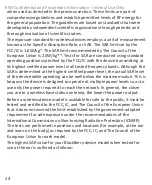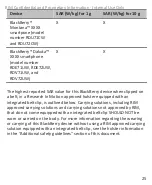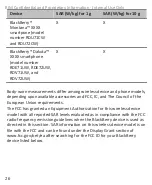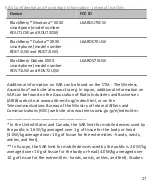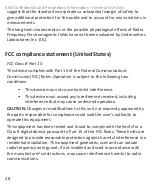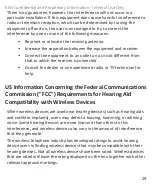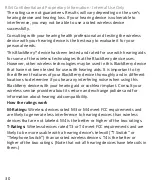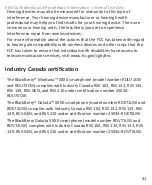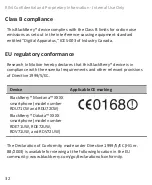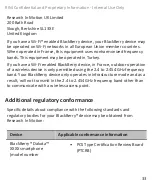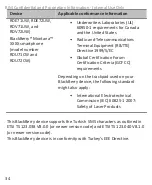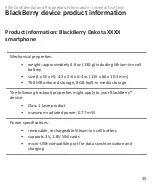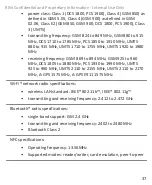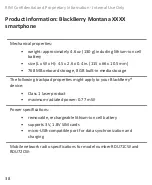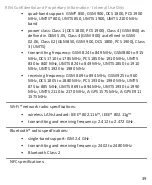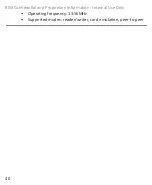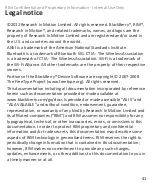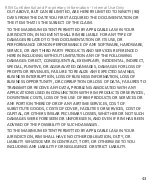
There is no guarantee, however, that interference will not occur in a
particular installation. If this equipment does cause harmful interference to
radio or television reception, which can be determined by turning the
equipment off and on, the user is encouraged to try to correct the
interference by one or more of the following measures:
• Reorient or relocate the receiving antenna.
• Increase the separation between the equipment and receiver.
• Connect the equipment to an outlet on a circuit different from
that to which the receiver is connected.
• Consult the dealer or an experienced radio or TV technician for
help.
US Information Concerning the Federal Communications
Commission ("FCC") Requirements for Hearing Aid
Compatibility with Wireless Devices
When wireless devices are used near hearing devices (such as hearing aids
and cochlear implants), users may detect a buzzing, humming, or whining
noise. Some hearing devices are more immune than others to this
interference, and wireless devices also vary in the amount of interference
that they generate.
The wireless telephone industry has developed ratings to assist hearing
device users in finding wireless devices that may be compatible with their
hearing devices. Not all wireless devices have been rated. Wireless devices
that are rated will have the rating displayed on the box together with other
relevant approval markings.
RIM Confidential and Proprietary Information - Internal Use Only
29

